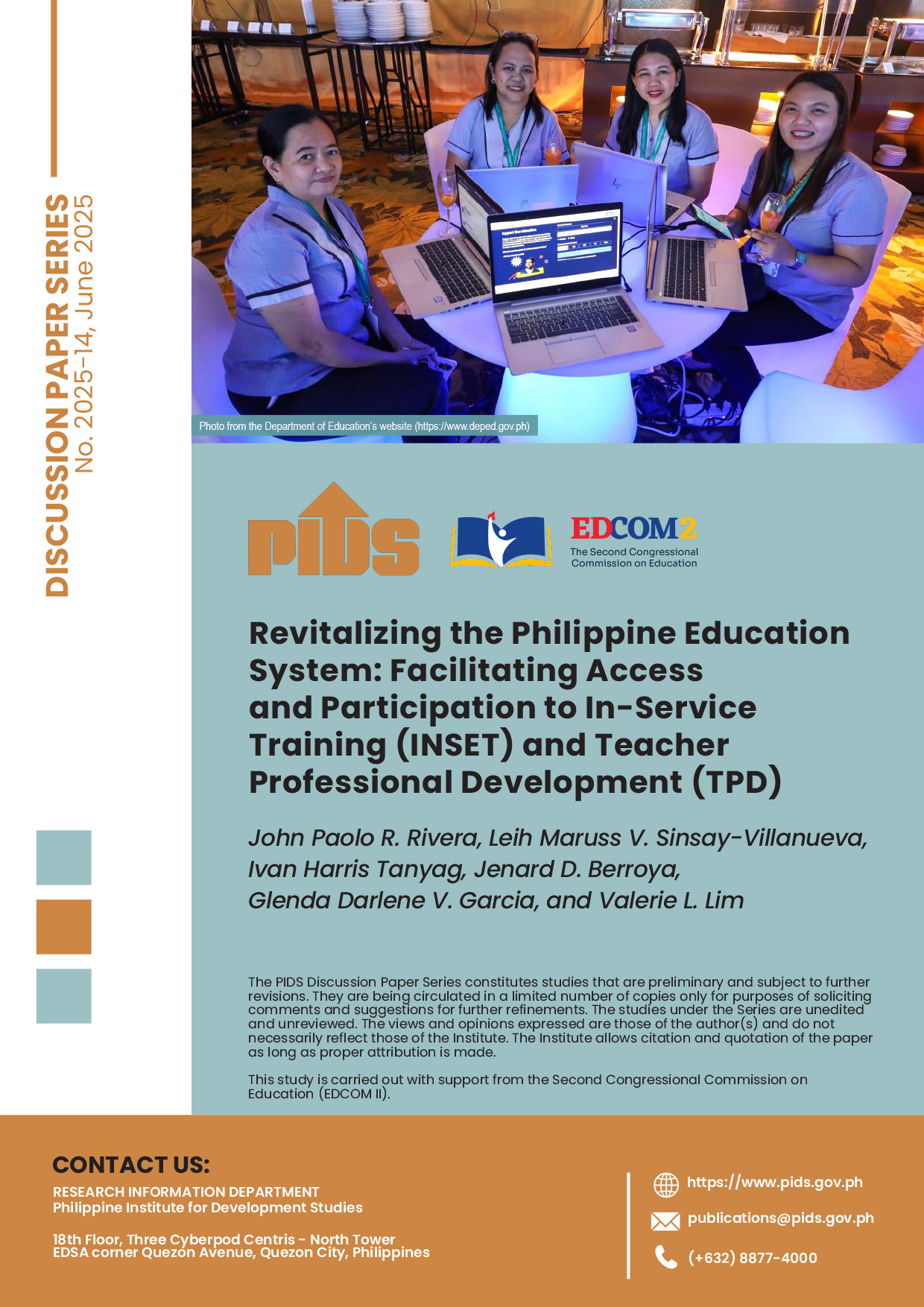FINANCIAL constraints are among top barriers that hinder the Filipino youth who are not under employment, education or training (NEET) from pursuing technical and vocational education and training (TVET), according to state think tank Philippine Institute for Development Studies (PIDS).
In a recent webinar, results from a study commissioned by the Technical Education and Skills Development Authority (TESDA), in partnership with the Philippine Business for Education and authored by PIDS Supervising Research Specialist John Paul Corpus and PIDS President Aniceto Orbeta Jr., revealed that 48 percent of their youth NEET respondents did not pursue TVET due to “lack of funds for tuition or allowance.”
In the survey, respondents mentioned other barriers such as lack of information at 13 percent, housework or caring duties (11 percent), and seeking work (10 percent).
“Interestingly, 36 percent said they did not experience any hindrance from pursuing TVET,” Corpus added. “Perhaps, some of [them did not pursue such], because it was their choice not to.”
When asked about the needed support to encourage youth participation in TVET, the majority of respondents said the provision of allowance support and information on job opportunities would be a big factor to study. Other forms of assistance cited were tuition support, job search support, and information on TVET programs.
The study also discovered other issues concerning the youth NEET in the country. For one, Orbeta said only a few government agencies use the said concept.
Authors also noted the undercounting of TVET trainees due to variations in definition of training participation by the Philippine Statistics Authority (PSA) and TESDA.
“The current definition of PSA undercounts the number of those who are in training by about almost 45 percent,” Orbeta pointed out. “They do not count those who are not trained in universities and community-based training programs. These are big components of TESDA training.”
The PIDS president pointed out that the government must provide financial support and employment facilitation assistance, as well as strengthen information dissemination about TVET to encourage participation among the NEET youth.
“We know [the government has been giving] a lot of financial support,” he said. “Perhaps, we should do a little bit of nuancing where we should be putting our money, so that we can improve [training] participation.”
He also called on the PSA and TESDA to “resolve the differences in the definition of training participation.”
Moreover, the authors emphasized the importance of promoting the NEET concept among relevant government agencies, saying that “being an NEET youth has a big cost to society.”
Relatedly, Orbeta said more in-depth studies on the determinants of youth NEET should also be pursued.
“Why are females going into inactivity when they leave training or school? That is one issue that we need to find good data on,” he inquired. “We should also identify policies that will draw them into training.”
No money, more learning problems? PIDS’ recent study says it is so












